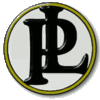Panhard PL 17
| Panhard | |
|---|---|
|
Panhard PL 17 (1st series)
|
|
| PL 17 | |
| Sales designation: | PL 17 |
| Production period: | 1959-1965 |
| Class : | Middle class |
| Body versions : | Sedan , cabriolet , station wagon |
| Engines: |
Petrol engines : 0.85 liters (31-44 kW) |
| Length: | 4285-4580 mm |
| Width: | 1600-1720 mm |
| Height: | 1460-1735 mm |
| Wheelbase : | 2570-2800 mm |
| Empty weight : | 805-830 kg |
| Previous model | Dyna Z |
The Panhard PL 17 was a model from the French manufacturer Panhard . It was launched on June 29, 1959 as the successor to the Dyna Z model and was manufactured until 1965. The car was a further development of its predecessor, but had an even more streamlined body.
Model name
The "PL" stood for "Panhard & Levassor" (that is what the company was called until 1945) and should exude a similar elegance to the "DS" from Citroën. The "17" represents the sum of 5 CV ( French tax horsepower ), 6 seats and 6 l / 100 km (fuel consumption).
From 1964 the "PL" was omitted. This coincides with the takeover of the Panhard car production by Citroën .
Technical specifications
The car took over the air-cooled engine of its predecessor Dyna Z with 851 cm³ displacement and 42 HP (31 kW). The “Tigre” model had 50 hp (37 kW). The engines had two cylinders in a boxer arrangement and were connected to the gearbox at the rear and two exhaust pipes at the front. From model year 1964 (i.e. from July 1963) the displacement sank to 848 cm³ and the power increased to 50 HP (37 kW), or 60 HP (44 kW) for the "Tigre".
The front wheels were driven via a four-speed gearbox with steering wheel shift and synchronization in gears 2 to 4.
The standard version weighed around 805 kg, the Tigre 830 kg. This low weight together with the aerodynamic shape ( C w value approx. 0.26) ensured a top speed of 130 km / h for the standard version and 145 km / h for the Tigre.
The front wheels were suspended on two transverse leaf springs, the rear wheels with a rigid drawbar axle on longitudinal struts with three torsion bars on each side.
It was possible to remove the rear seat so that the trunk, which was already large at 527 l, could be further enlarged. This is how much space there was from 1964 when the spare wheel was moved from the trunk under the bonnet, where it fit over the air filter. This was possible because the rims did not have a hub - this was formed by the aluminum brake drums that had "ears" to attach the rims.
Models
| model | Construction period | Engine type | Displacement | Tax horsepower (fr.) | power |
|---|---|---|---|---|---|
| L1 standard | 07/1959 - 08/1960 | 2-cylinder boxer 4-stroke | 851 cc | 5 CV | 42 hp (31 kW) |
| L1 Tigre | 07/1959 - 08/1960 | 2-cylinder boxer 4-stroke | 851 cc | 5 CV | 50 HP (37 kW) |
| L2 Tigre (Cabriolet) | 03/1960 - 10/1960 | 2-cylinder boxer 4-stroke | 851 cc | 5 CV | 50 HP (37 kW) |
| L3 standard export | 08/1959 - 07/1960 | 2-cylinder boxer 4-stroke | 851 cc | 5 CV | 42 hp (31 kW) |
| L4 standard | 07/1960 - 09/1962 | 2-cylinder boxer 4-stroke | 848 cc | 5 CV | 42 hp (31 kW) |
| L4 Tigre | 07/1960 - 09/1962 | 2-cylinder boxer 4-stroke | 848 cc | 5 CV | 50 HP (37 kW) |
| L5 Tigre (Cabriolet) | 10/1960 - 09/1962 | 2-cylinder boxer 4-stroke | 848 cc | 5 CV | 50 HP (37 kW) |
| L6 standard | 09/1962 - 06/1965 | 2-cylinder boxer 4-stroke | 848 cc | 5 CV | 50 HP (37 kW) |
| L7 Tigre | 09/1962 - 06/1965 | 2-cylinder boxer 4-stroke | 848 cc | 5 CV | 60 hp (44 kW) |
| L8 Tigre (Cabriolet) | 09/1962 - 06/1963 | 2-cylinder boxer 4-stroke | 848 cc | 5 CV | 60 hp (44 kW) |
| L9 standard (combi) | 05/1963 - 05/1965 | 2-cylinder boxer 4-stroke | 848 cc | 5 CV | 50 HP (37 kW) |
| WL1 Standard (Utilitaire) | 12/1959 - 07/1960 | 2-cylinder boxer 4-stroke | 851 cc | 5 CV | 42 hp (31 kW) |
| WL2 Standard (Utilitaire) | 12/1959 - 06/1960 | 2-cylinder boxer 4-stroke | 851 cc | 5 CV | 42 hp (31 kW) |
| WL3 Standard (Utilitaire) | 06/1960 - 07/1962 | 2-cylinder boxer 4-stroke | 851 cc | 5 CV | 42 hp (31 kW) |
| WL4 Standard (Utilitaire) | 06/1960 - 07/1962 | 2-cylinder boxer 4-stroke | 851 cc | 5 CV | 42 hp (31 kW) |
| WL5 Standard (Utilitaire) | 09/1962 - 05/1965 | 2-cylinder boxer 4-stroke | 848 cc | 5 CV | 50 HP (37 kW) |
| WL6 Standard (Utilitaire) | 09/1962 - 05/1965 | 2-cylinder boxer 4-stroke | 848 cc | 5 CV | 50 HP (37 kW) |
The end
In 1965, Citroën stopped producing the car. The Model 24 carried the Panhard name for another two years. From 1967 onwards there were only military vehicles under this name - Citroën had not bought this part of the company.





